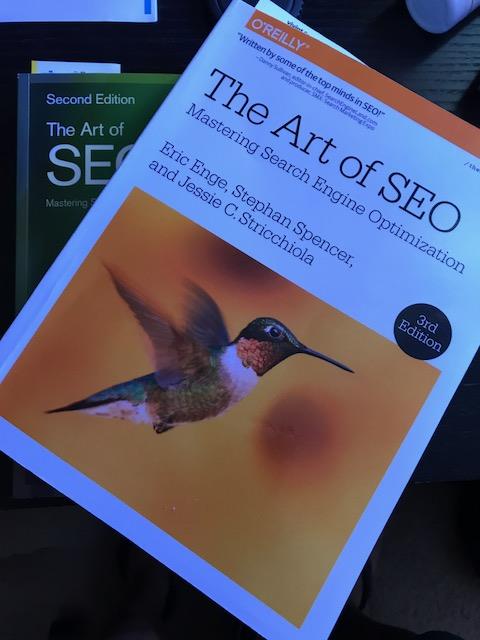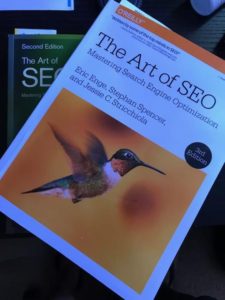The internet and search engines are still relatively new areas of technology. For small business owners the task of understanding how search engine optimization operates without any formal search engine training can be daunting. Most of the small business owners I run into are experts in their own areas of business, but many need clarification and insight in basic SEO techniques and planning.
The way people search for information has changed dramatically over the last few decades. Gone are the days of going to the library when you wanted to look something up or opening the old Yellow Pages books to find a plumber in your area. Now anyone can type in whatever they want to know into any of the magic search engines, primarily Google, Bing and Yahoo and Ta-dah, by the time you blink you will have thousands if not millions of results with applicable data. With so many choices and so much competition, as a business owner I would ask how do I get on the first page of Google? What is SEO and how do I learn basic SEO?
Understanding Search Results: An introduction to SEO is a search engine tutorial of sorts. In order to understand the basics of SEO you first have to understand the basics of a search engine and how results are ranked. In its most basic definition a search engine has a search query box, some form of paid advertising and natural or organic results. Look at the first page of any search engine as real estate. There’s only so much real estate to go around so companies generally have two choices to try to show up on the first page; Pay per Click through Adwords or Microsoft Adcenter and or search engine optimization. SEO search results are pulled from indexes and ranked based on popularity, relevance and other algorithms not known to anyone but a select few.
What is SEO?: SEO stands for search engine optimization and refers to the organic section of the various search engines underneath the paid ads and local map listings. SEO is a process by which the goal is to improve the position of the website using ranking factors such as anchor text, therefore moving it higher with more traffic and conversions as a result. At its core the trick is to be relevant, credible and of high quality when anyone searches for your product or service.
SEO Ranking: The search engines send out crawlers discovering public information, going from website to website looking for relevant information which then much like a library gets indexed. While there is no specific outline into search engine ranking, SEOmoz recently conducted a survey which ranked the top nine factors of SEO. In no particular order they are;
- Page level link metrics
- Domain level link authority features
- Page level keyword usage
- Domain level keyword usage
- Page level social metrics
- Domain level brand metrics
- Page level keyword agnostic features
- Page level traffic/query data
- Domain level keyword agnostic features
Conversely there are attributes of a website that can have a negative influence on ranking. These include;
- Malware hosting
- Cloaking
- Pages on a site that sell links
- Content that advertises paid links
- Page Speed
In addition to this, businesses cannot ignore the importance of local SEO. Local SEO involves location searches for a particular product or service. In order to maximize the effectiveness of your local SEO;
-
Verify your Google map listing
- Embed a Google map in your website, especially if you have a contact us page.
- Optimize Meta tags and pages content for local keywords
- Use consistent contact information across all online profiles
SEO Planning: The structure of any website must be considered when implementing an SEO campaign including navigational and internal linking among other key factors as outlined below
Keyword Strategy: Two basic ways of looking at SEO keyword strategy include branding keywords such as the name of your company and keyword groups. The best way to create a keyword group involves asking the following questions;
- What are people searching for during the time that they need my products or services?
- What product or service do I provide to solve their problem?
For example, the purpose of this blog was to inform and educate on a basic level and planning level “SEO Basics & Planning”?. Using the technique above I came up with the following keywords using Google’s keyword planner;
- Search engine training
- Basic SEO techniques
- Learn Basic SEO
- Introduction to SEO
- SEO ranking
- Search engine tutorial
- SEO search results
- Search engine optimization
- Crawlers
- Search engine ranking
- SEO Plan
- Google Map Listing
- Local SEO
- Search engine optimization ranking
- Keyword strategy
- SEO keyword strategy
- Keyword planner
- SEO strategy
Cross-link relevant content: Linking between related articles is difficult, but can be rewarding if done correctly. This is especially true with e-commerce sites where groups of products are crosslinked to relate to each other. This has become a common practice among online retailers with links such as “customers who bought this also bought”,” also viewed”,” frequently bought together”.
Anchor Text: An example would be text that can be clicked through such as this; Anchor Text. This should be above all relevant and descriptive. Avoid generic anchor text links such as “more” or “click here”. For example if a car rental company sets up online reservation capability then underneath each respective vehicle such as a 2017 Nissan Murano” there should be a “reserve Nissan Murano” instead of “click here”.
Breadcrumb Navigation: This is possibly the easiest way to show a customer the hierarchy and structure of a website. Breadcrumb navigation should be key word rich and follow a predictable flow such as “Home > Appliances > Washers & Dryers > Washers”.
Link Depth: The most important content shouldn’t be 4 or 5 clicks away from the homepage. Instead all valuable relevant content should be relatively close to the home page. This allows search engines to identify which pages are the most valuable to the searcher.
Resources; I suggest keeping apprised of all the latest SEO and search engine trends on https://searchenginewatch.com , http://searchengineland.com, https://www.searchenginejournal.com/ http://yoast.com


